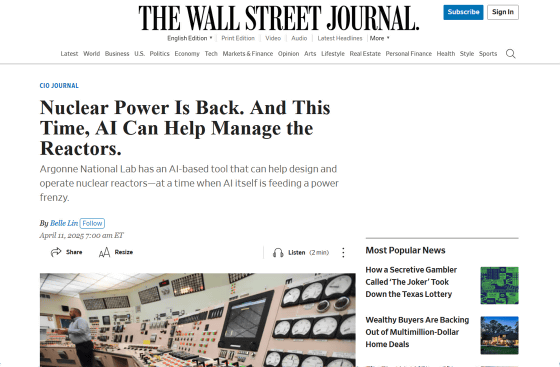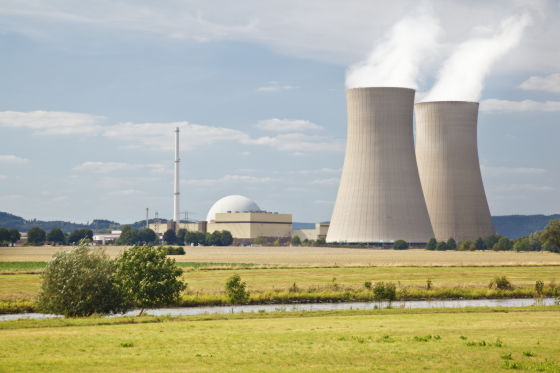A US research institute develops 'PRO-AID,' an AI-based tool to assist nuclear power plant operations amid growing demand for nuclear power

In recent years, major technology companies have been investing heavily in the development of AI tools, which has led to the construction of data centers for AI. As the demand for nuclear power increases due to the rapid increase in AI data centers that consume huge amounts of electricity,
Nuclear Power Is Back. And This Time, AI Can Help Manage the Reactors. - WSJ
https://www.wsj.com/articles/nuclear-power-is-back-and-this-time-ai-can-help-manage-the-reactors-5ce03ae7

The amount of electricity consumed by data centers around the world is increasing year by year, and according to calculations by the International Energy Agency (IEA), data centers will need an amount of electricity equivalent to the total electricity consumption of Japan by 2026. It has been pointed out that the enormous power consumption of data centers is already a bottleneck in AI development , and there are reports that there is an increasing risk of power shortages occurring in more than half of the Americas in the next 5 to 10 years.
One area that is attracting attention is nuclear power plants, which have been declining for a time. It has been revealed that Unit 1 of the Three Mile Island Nuclear Power Plant in Pennsylvania, USA, known forthe meltdown of Unit 2 in 1979, will be restarted by 2028 to supply electricity to Microsoft.
The Three Mile Island nuclear power plant will restart and supply electricity to Microsoft - GIGAZINE

Argonne National Laboratory has recently announced a new AI-based tool called PRO-AID to assist nuclear power plant operators. PRO-AID is an acronym for Parameter-Free Reasoning Operator for Automated Identification and Diagnosis, and uses a type of automated reasoning to perform real-time monitoring and diagnosis of nuclear power systems.
PRO-AID also combines generative AI with large-scale language models to inform and explain to operators in natural language when there is a problem with the system, which can improve the efficiency of nuclear power plant operators and even allow AI tools to take over some of the work of older workers when they retire.
'If we can hand off some of the lower-level capabilities to machines, we won't have to replace people when they retire,' said Richard Vilim, a senior nuclear engineer in Argonne National Laboratory's Nuclear Science and Engineering Division.

The 94 operating nuclear reactors in the United States provide about 20% of the electricity used in the country, and their average age is about 42 years. 'Nuclear power plants were built more than 30 years ago, so they are as old as dinosaurs in terms of technology,' Vilim said.
According to Vilim, nuclear power plant technology is far behind that of gas-fired power plants, which are relatively new and have become more automated with digital monitoring tools. Argonne's plan is to provide PRO-AID to new nuclear plants that use the technology, but it is also considering introducing PRO-AID to older nuclear plants.
However, in the case of conventional nuclear power plants, the question arises as to whether the introduction of PRO-AID is really worth the cost when considering the introduction costs and the number of years of operation. When introducing PRO-AID, the nuclear power plant must be disconnected from the power grid for a certain period of time, and there is also the issue of opportunity loss during that time.
'The question that utilities are facing is: is it worth it to implement PRO-AID? Or do we already have what it takes to get to a goal that may be 20 years away?' Vilim said.

Related Posts:
in Software, Posted by log1h_ik






